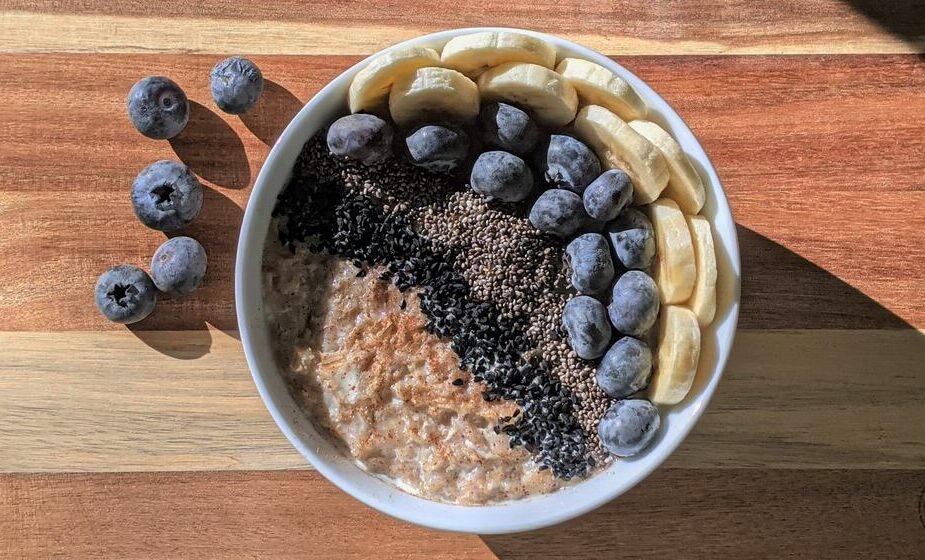The best and easiest way to improve your diet, whatever your diet looks like at the moment, is to eat more fruit.

Why we might not be eating enough fruit
Unfortunately, many people are afraid of eating too much fruit because of the amount of sugar that it contains. It is true that your body converts all sugar to glucose, and it doesn’t matter whether the sugar comes from fruit or sweets.
But the sugar in fruit is sugar in its natural context, in a complete package of fibre, minerals, and vitamins. Therefore, it affects your body in a different way.
Another reason why people might avoid eating fruit is because the acids in fruits like citrus fruits can erode the tooth enamel. In that respect, the frequency of eating something that contains sugar is much more important than the quantity of it. Your tooth enamel is there to protect your teeth, but it needs enough time between meals to do its job. So you want to eat fruit with your meals as much as possible instead of in between meals.
Eating lots of fruit (and a variety of vegetables) is one of the best ways to support a healthy gut microbiome. The microbiome in the gut is often referred to as the second brain. Your gut affects your brain, and your brain affects your gut. Having a bad gut microbiome can cause stress and anxiety. Treatment for irritable bowel syndrome is often focused on stress reduction.
One of the reasons why fruit is so good for your gut microbiome is that it contains fibre. Only fruits, vegetables, whole grains, and legumes contain natural fibre. Animal products, such as meat and dairy, contain no fiber. It is recommended to consume at least 25–35 grams of dietary fibre daily. On average, the daily intake of fibre in Western countries is around 20 grams per day. (source)
How much fruit should we eat every day?
The most recent available data that exists on fruit consumption in the EU is a combination of fruit and vegetable consumption (source). This data shows that people, on average, eat 364 grams of fruit and vegetables per day. This is almost 10 percent below the minimum of 400 grams of fruit and vegetables per day as recommended by the World Health Organization.
Shockingly, 1 in 3 people in the EU reported not consuming any fruit or vegetables daily, and only 12 percent of the population consumed the recommended 5 portions or more daily. Bear in mind that this recommendation is a minimum.
You should preferably eat at least four pieces of fruit per day.
How can we easily eat more fruit every day?
The easiest way to incorporate lots of fruit into your diet is with a daily smoothie. Even though it’s always best to chew on the whole food, smoothies are convenient and let you consume foods you might not otherwise pack into your daily diet, such as vegetables. The sweet taste of fruit can easily mask the taste of vegetables.
It is a myth that the fibre in fruit somehow gets lost when you blend it, so you don’t have to worry about that.
However, it’s good to remember to drink a smoothie mindfully. So, sip your smoothie slowly instead of gulping it down. If you give your mind and body time to register the intake and send appropriate satiation signals, you avoid feeling hungry after a smoothie.
Beginner friendly smoothies
1. Green smoothie
Two ripe bananas (black spots!), half a mango, 100 grams of kale, 2 tablespoons of flax seeds, unsweetened soy yogurt, and 300 ml of water.
2. Chocolate smoothie
Three ripe bananas (lots of black spots!), three dates, half a courgette, 1 tablespoon of cacao powder, and 200 ml of plant drink.
For hot summer days, you can blend up frozen berries and/or frozen bananas (bananas must have lots of black spots before you freeze them!) with peanut butter to make delicious and healthy nicecream.
Another great way to incorporate more fruit into your diet is oatmeal for breakfast with nut butter, chia and/or flax seeds, frozen berries, and cut bananas, pear, apple, mango, or whatever fruits you enjoy eating and are in season.
Enjoy!



